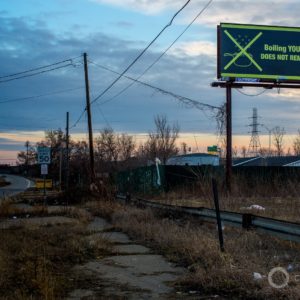The Stream, October 11, 2019: Ethiopia’s Capital Works to Boost Water Supply as Demand Grows
The Global Rundown
Addis Ababa, Ethiopia, spearheads new water infrastructure to help combat chronic water shortages. The U.S. Environmental Protection Agency (EPA) announces new regulations on lead in drinking water. A super typhoon disrupts transportation and sporting events in Japan. New modeling predicts future interactions between humans and nature, and warns that those living in Africa and South Asia are most likely to face future water shortages. Neighborhood water pots, once a staple of Myanmar’s culture, have increasingly fallen out of practice.
“We have to know how to use our resources as a metropolitan city and think about climate change and water scarcity in every decision.” –Bisrat Kifle, a researcher at Ethiopian Civil Service University, in reference to attempts to boost the water supply of Addis Ababa. Water demand in the Ethiopian capital has almost doubled in the last five years, and the city is set to continue growing. The local government has begun several development projects aimed at securing the city’s long-term water supply. Thomas Reuters Foundation
Latest WaterNews from Circle of Blue
What’s Up With Water – October 7, 2019 — This week’s edition of What’s Up With Water includes coverage on India’s late monsoon, worldwide groundwater pumping, and new PFAS regulations in New Hampshire.
HotSpots H2O: India’s Monsoon Season, Wettest in 25 Years, Comes to an End — Following a slow start, India was deluged this year with its heaviest monsoon rains in a quarter century.
By The Numbers
90 percent Proportion of domestic flights canceled at Tokyo’s Haneda airport, as well as another airport east of the city, ahead of Typhoon Hagibis. The super typhoon, which is projected to make landfall on Saturday, also caused the cancellation of two rugby world cup games. Reuters
Science, Studies, and Reports
A new study, led by an ecologist at Stanford University, considers nature’s contributions to human life and warns that the decline of nature will impact billions of people by 2050. One of the areas that researchers modeled was the future of clean water. They found that up to five billion people, especially those in Africa and South Asia, will face shortages of food and clean water due to the devastation of natural resources. National Geographic
On the Radar
On Thursday, the U.S. EPA introduced new regulations on lead in drinking water, but critics say the updated standards are still too weak. The new rule outlines better, more targeted sampling methods, and requires that communities fix the water source if a sample contains lead levels above 15 parts per billion. Under the new rule, however, affected communities are only required to replace 3 percent of lead service lines per year, a process that could take up to 33 years. The old rule required a replacement rate of 7 percent per year, giving utilities 13 years to replace the lines. Reuters
Setting water out in clay pots for thirsty passers-by has long been a facet of Myanmar’s culture. In recent decades, however, the shared jugs have been replaced by plastic bottles, or removed altogether. The changing tradition has led to more plastic pollution, and locals fear it is also symbolic of diminishing trust in communities and neighborhoods. The New York Times
Kayla Ritter is a recent graduate of Michigan State University, where she studied International Relations and Teaching English to Speakers of Other Languages. She is currently based in Manton, Michigan. Kayla enjoys running, writing, and traveling. Contact Kayla Ritter






Leave a Reply
Want to join the discussion?Feel free to contribute!